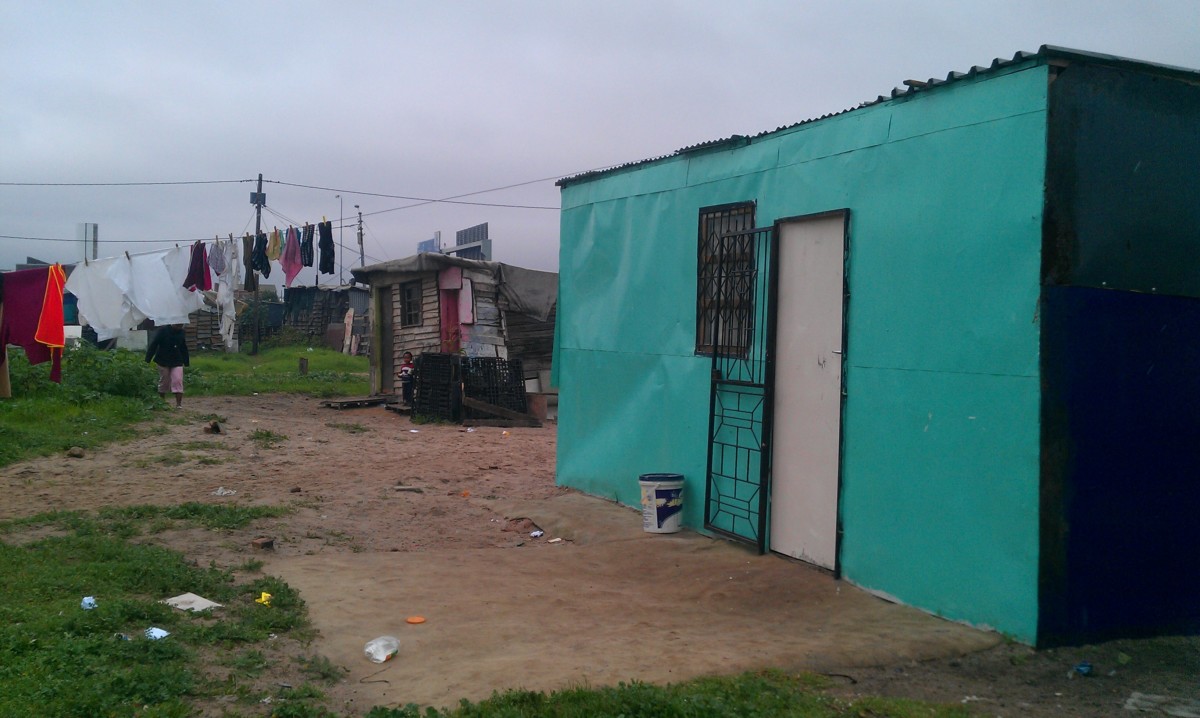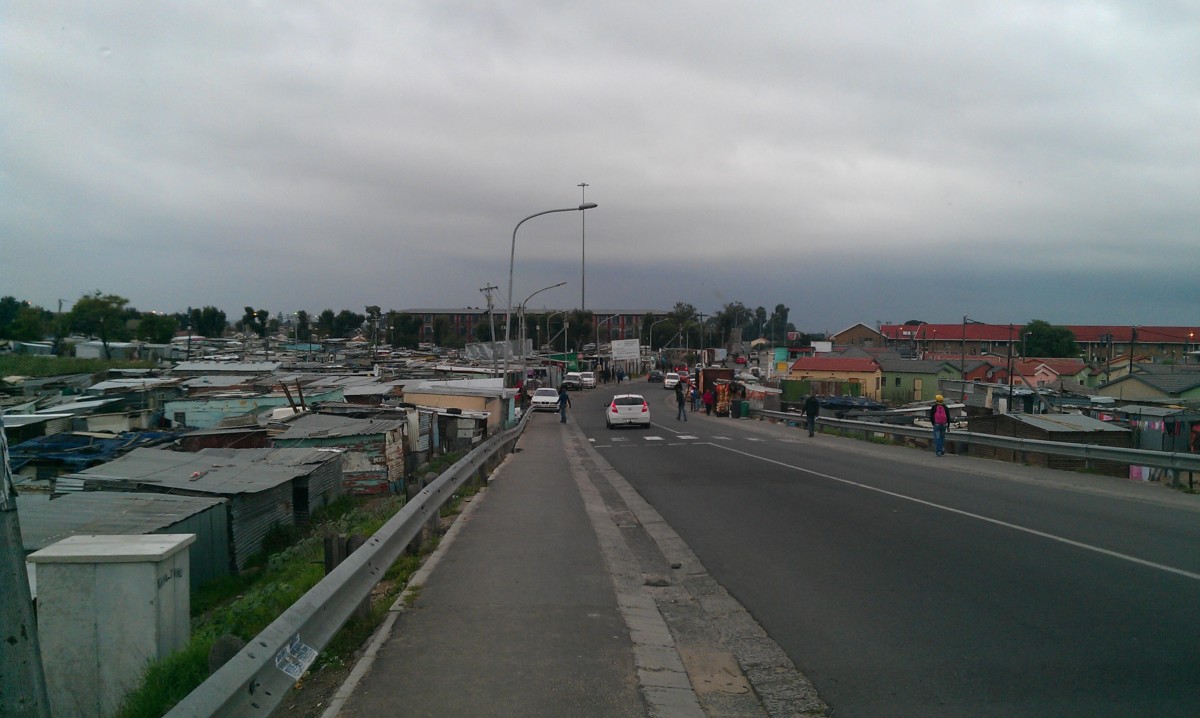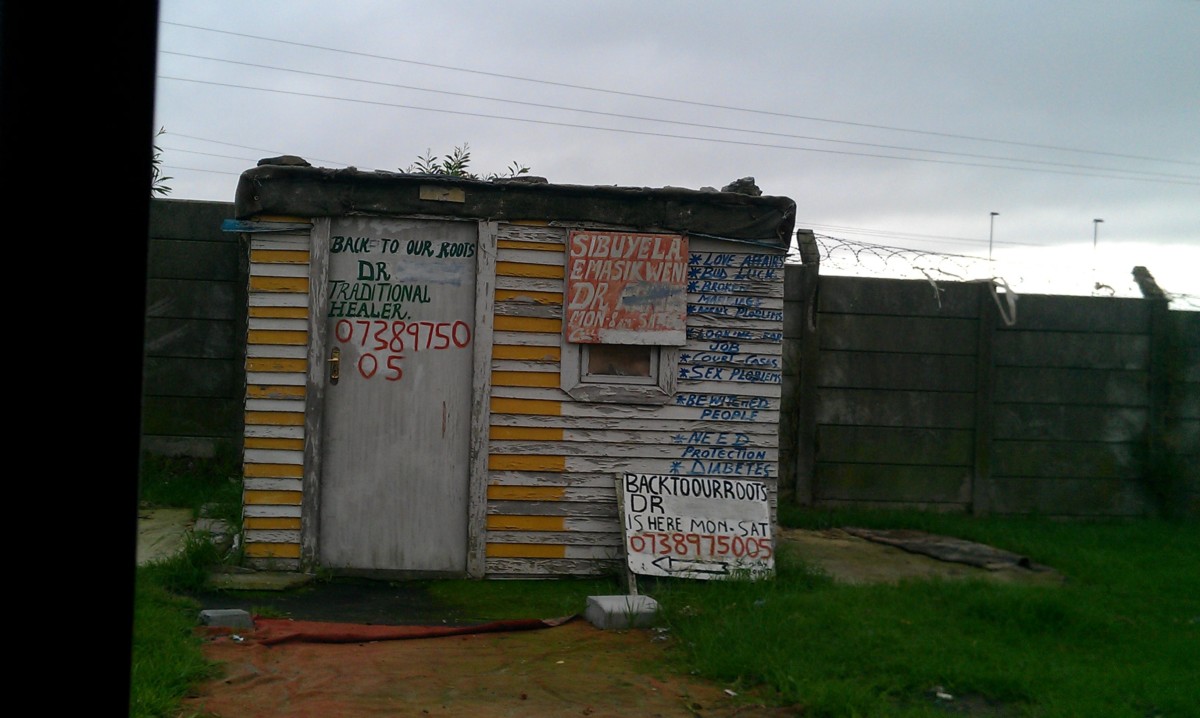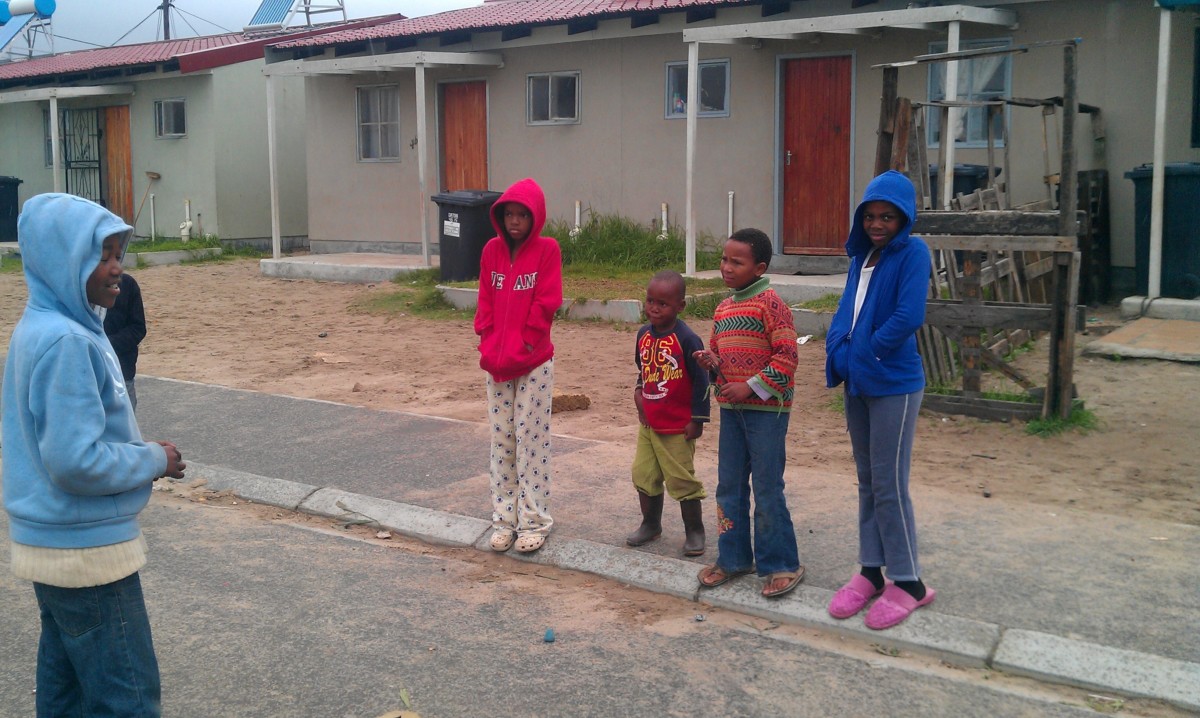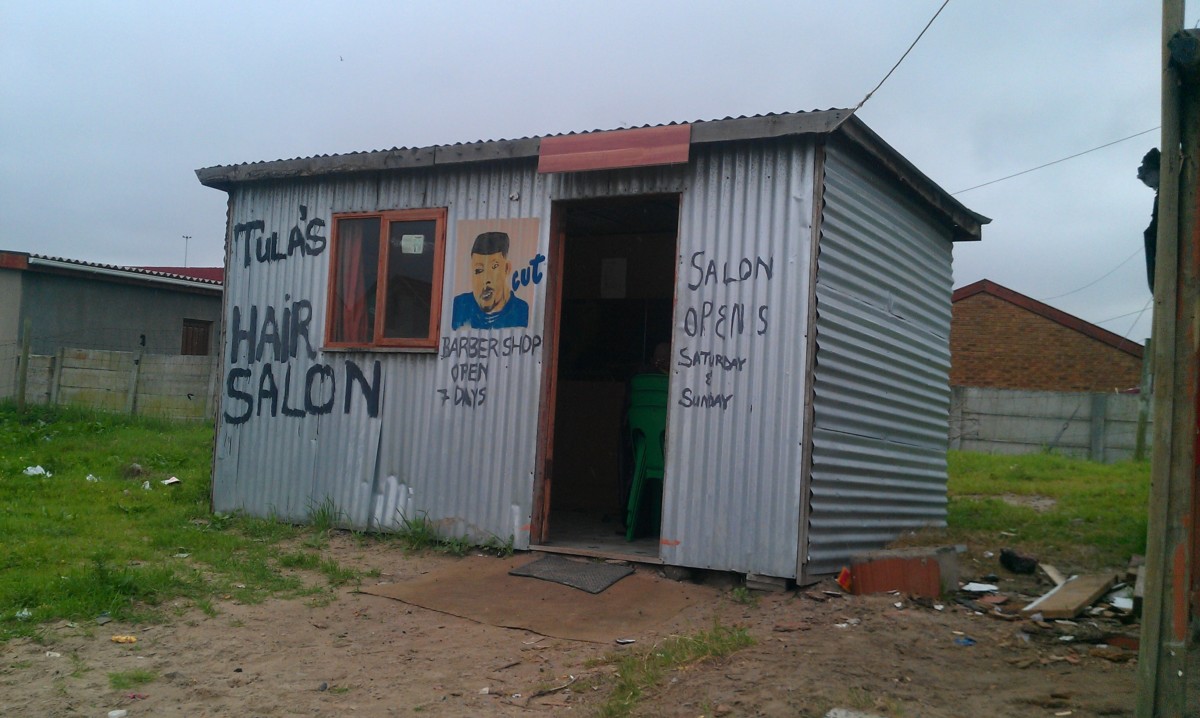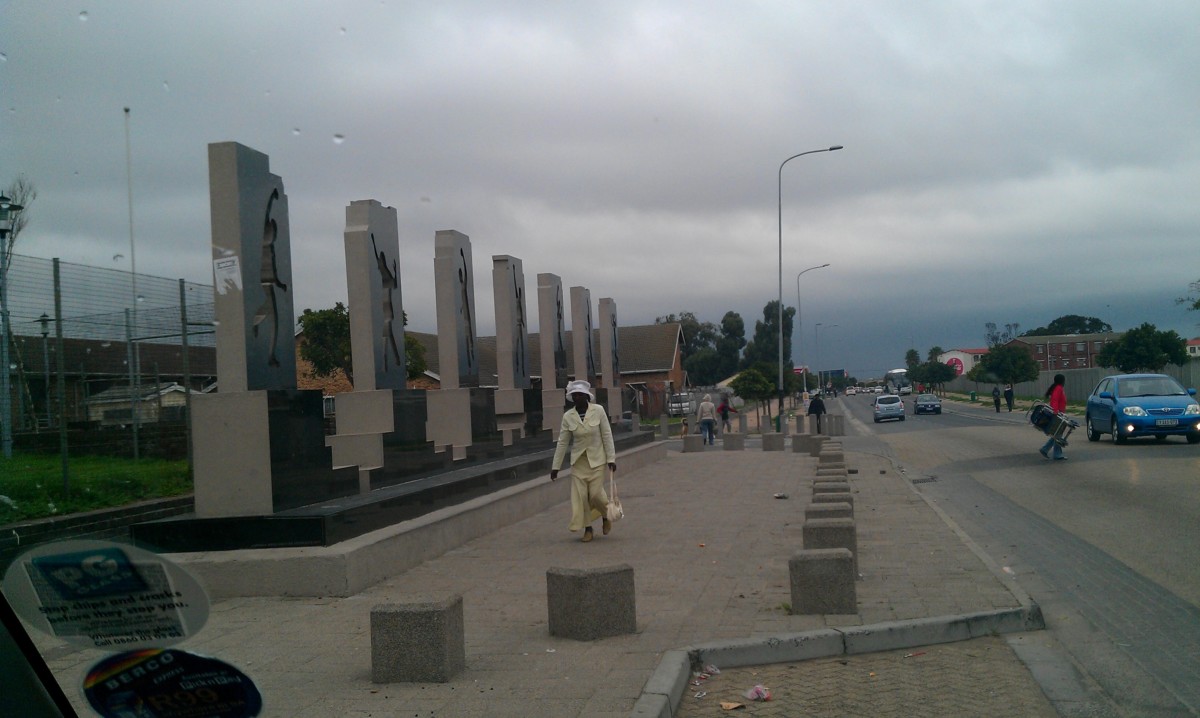Sunday morning we had to get up and get going fairly early as we had planned a Township Gospel Tour. We had scheduled the tour with Camissa Tours and our driver was scheduled to pick us up at the Parker Cottage B&B at 8:30am. Our driver was there with a van right on time. His name was Gladstone and we were the only passengers so we essentially had a private tour.
The townships are the poor communities where the blacks and coloureds were forced to live during Apartheid years and many still live. Prior to our visit my impression was that these were all shanty houses, much like a refugee camp. We drove through three townships but spent most of our time in Langa which is Gladstone’s home and is the oldest township in the Capetown area. Langa has a population of 80,000 people. There is a diverse range of housing types in this township, ranging from shanty one rooms shacks (10 x 10) with no utilities to project style apartment buildings to middle class brick ranch houses in the “Beverly Hills” neighborhood. The streets are mostly paved and the community has multiple high schools and primary schools. There are health services but they didn’t look like much.
Background information on Langa Township.
The shanty houses are considered “temporary” housing while families wait for more permanent accommodations to become available. Some of the housing is provided for free, some for nominal rent (20R less than $3) per month for a bed in a room, shared by multiple family members), 250R ($30/month) for an apartment with 2 bedrooms, living area and kitchen, some for purchase (25,000 to 350,000 R). Surprise but noone wants to buy a condo in a township for 350,000R ($40,000). Apparently the banks and the government overspent on that venture so the units sit empty.
Electricity and water is prepaid in the apartments. We visited the inside of an older style apartment building, one of the original brick buildings constructed by the government. Originally these places were designed for men only, in a hostel environment. These men were brought to the Cape area as workers and women were not allowed to join them.
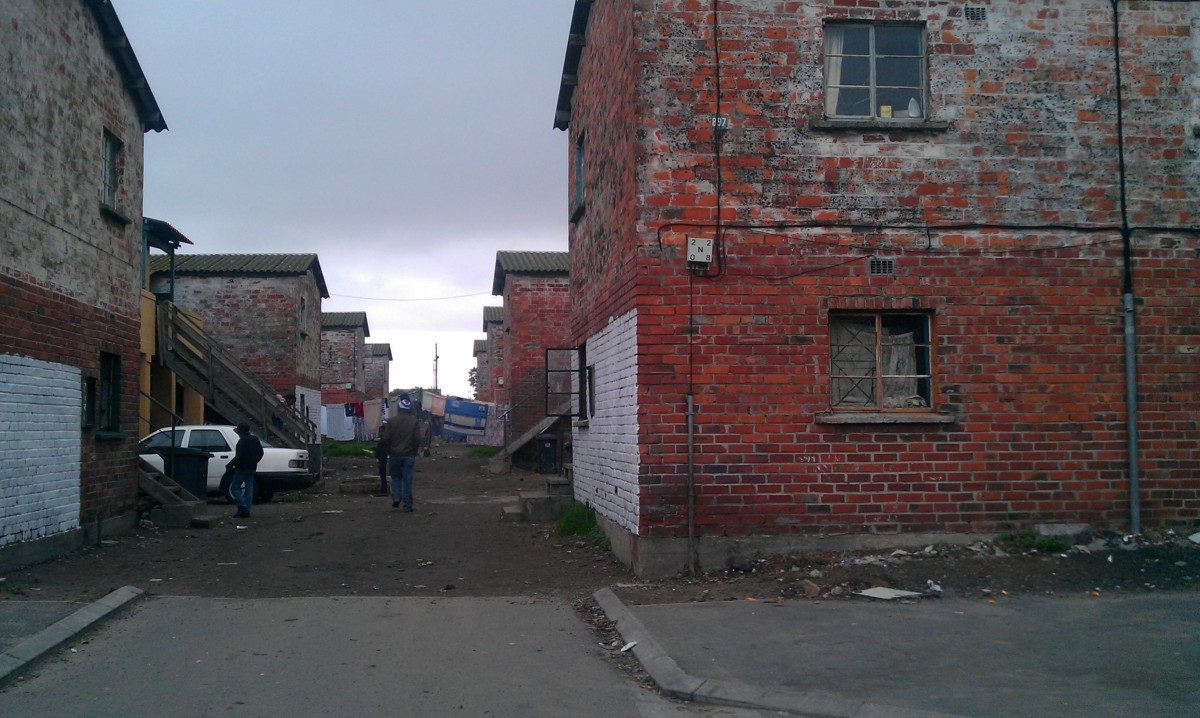
Now familes live in these “hostel-style” apartments, they are all cement/brick and there is a common room but all it contained was two picnic tables – no seating or cooking areas. At first I thought this was just an empty apartment he was showing us. But then this young girl (his sister) kept running through the room wrapped in a towel, obviously getting ready for a shower. The building includes a shared bath and six “bedrooms”. Inside one bedroom was the living area for an entire family – a double bed and a twin bed – shared by a family of four and another single man. They had a small refrigerator, a burner and an armoir for clothing. The guides mother was in the bed trying to stay warm. They had a roof over their heads and it was fairly warm but such a lack of privacy was a bit disconcerting. The “Beverly Hills” ranch houses is where the professionals who have become successful and who choose to stay in their home communities lives – the doctors, lawyers, teachers etc. I was surpised at how many cars and sattelite dishes we saw throughout the township. Many of the residents are not poor but working class. They stay in the townships becuase this is where their family and community have lived for many generations.
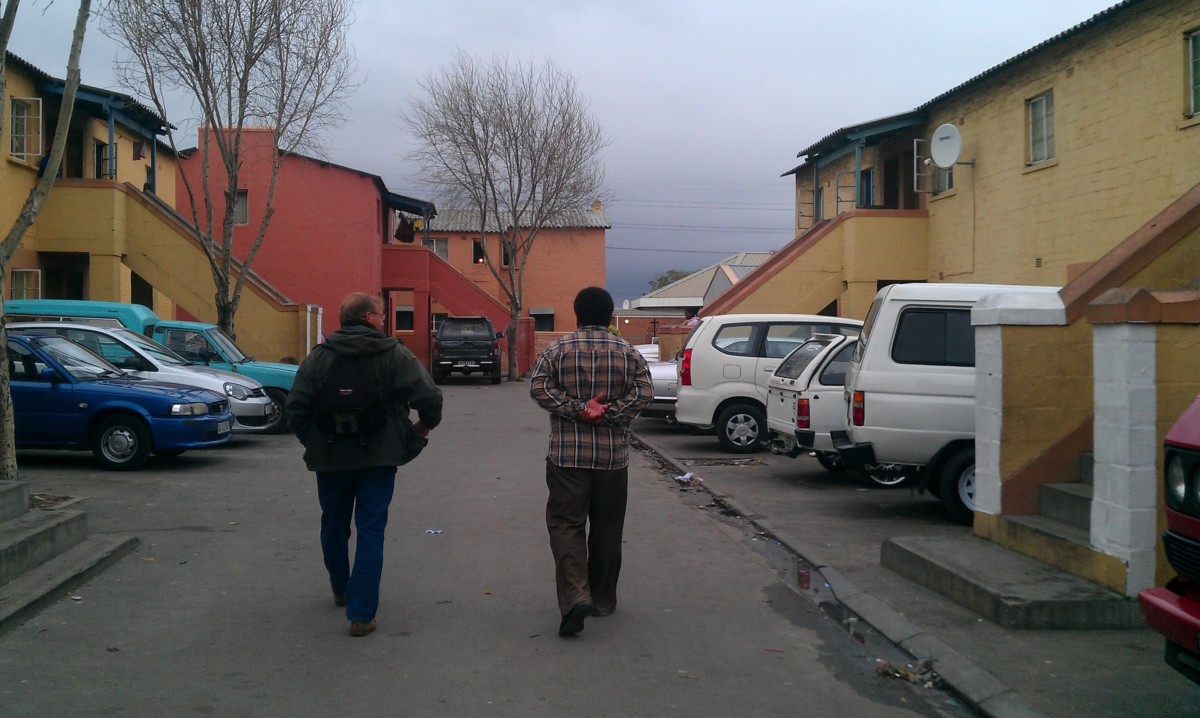
The shanty areas are very sad though – tiny little spaces for a family to live, no running water or toilets (shared facilities are available – porta potties, running faucets). The government was providing pre-paid electricity to the shanties to reduce risk of fire in the communities. As you drive around South Africa, you’ll see many of these shanty towns. On our drive through the Cape Peninsula we saw one in a beautiful valley between the mountains and the upscale coastal communities – far from any towns. On our drive to the Winelands we saw a very large shanty township stretching for miles and it looked to be all shacks and dirt roads.
The streets were full of people on a Sunday morning getting ready for church or coming from church. All the women were dressed up in their Sunday best. Gladstone took us to the beginning of the service at the Langa Baptist Church. They had a great band and nice sound system. The guests (tour groups) had reserved seating in the back. It was a fun time – they started right out with singing and music, led by a female youth director. Every now and then they would stop for prayers where everyone just spoke their own personal prayer out loud – not a single Lords Prayer or such like our church. The music was wonderful, similar to the gospel music we’ve heard at Jazz Fest in NOLA. Even when the electricity when on and off, they kept singing and dancing. A joyous way to celebrate life. We left the church just as the pastor began the service to continue our tour.
The townships have their business district with some food markets, lots of meat for sale, barber shops and even a traditional healer’s shack. But not much more.
We drove through another township which had better facilities than Langa – this was where the “coloured” community lived and being that they were part white, they were entitled to better living. Gladstone told us there was a way for blacks to apply for coloured status during the apartheid days to be able to apply for better housing.
They had to speak English for starters. The primary languages in the Eastern and Western Cape are Afrikaans, English and Xhosa. The blacks speak Xhosa as their first language and typically learn English at different levels as their second language. If they attend an integrated school they’ll learn Afrikaans.
Most whites speak Afrikaans as their first tongue and are also fluent in English as a second language (both taught in the white schools). Xhosa used to be taught as a third language in the primary white schools but our hostess said its not offered any longer.
Schools are integrated now – with blacks having the option to attend their neighborhood schools or to attend the former whites-only schools. Just as in the US, these are decisions made at the family level and are dependent on the parents understanding and desire for their kids to get a good education.

